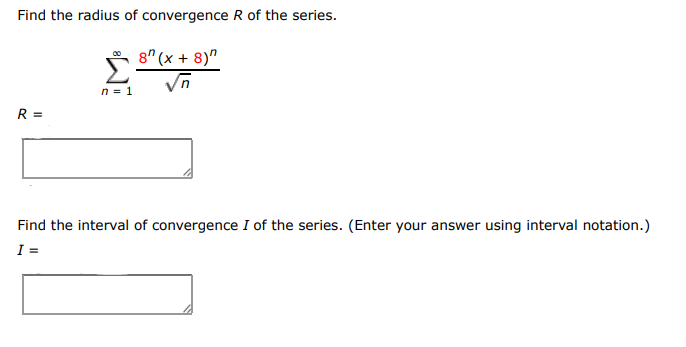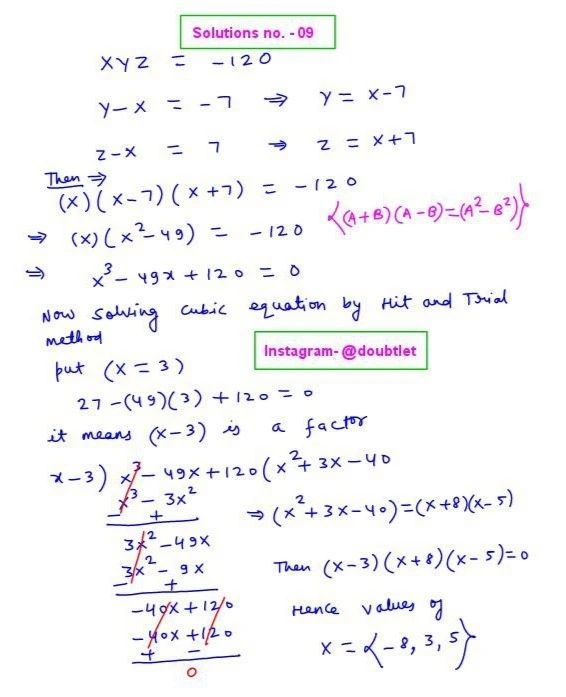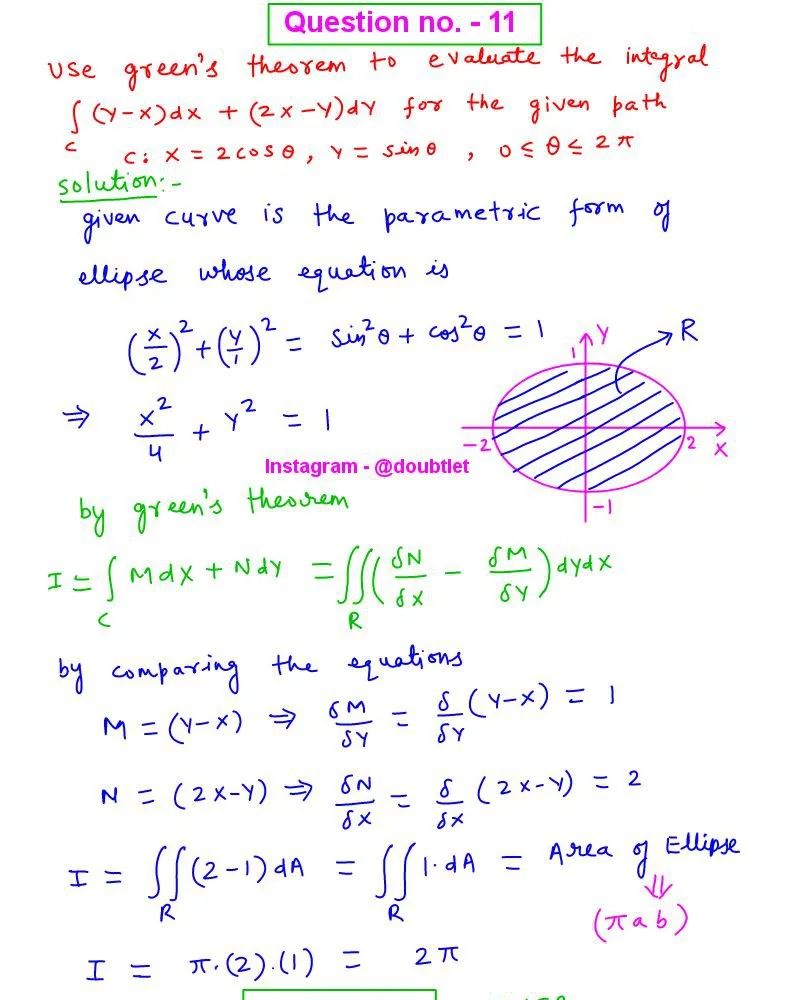Neetesh Kumar | December 7, 2024
Calculus Homework Help
This is the solution to Math 132 Assignment: 11.8 Question Number 8 Contact me if you need help with Homework, Assignments, Tutoring Sessions, or Exams for STEM subjects. Testimonials or Vouches from here of the previous works I have done.
Get Homework Help
Step-by-step solution:
To find the radius of convergence R R R Ratio Test to the general term:
a n = 8 n ( x + 8 ) n n . a_n = \frac{8^n (x+8)^n}{\sqrt{n}}. a n = n 8 n ( x + 8 ) n .
Step 1: Apply the Ratio Test
The Ratio Test states that the series converges absolutely if:
lim n → ∞ ∣ a n + 1 a n ∣ < 1. \displaystyle\lim_{n \to \infty} \left| \frac{a_{n+1}}{a_n} \right| < 1. n → ∞ lim a n a n + 1 < 1.
Compute the ratio:
∣ a n + 1 a n ∣ = ∣ 8 n + 1 ( x + 8 ) n + 1 n + 1 8 n ( x + 8 ) n n ∣ = ∣ 8 ⋅ ( x + 8 ) ⋅ n n + 1 ∣ . \left| \frac{a_{n+1}}{a_n} \right| = \left| \frac{\frac{8^{n+1} (x+8)^{n+1}}{\sqrt{n+1}}}{\frac{8^n (x+8)^n}{\sqrt{n}}} \right| = \left| 8 \cdot (x+8) \cdot \frac{\sqrt{n}}{\sqrt{n+1}} \right|. a n a n + 1 = n 8 n ( x + 8 ) n n + 1 8 n + 1 ( x + 8 ) n + 1 = 8 ⋅ ( x + 8 ) ⋅ n + 1 n .
Simplify the terms:
∣ a n + 1 a n ∣ = ∣ 8 ( x + 8 ) ∣ ⋅ n n + 1 . \left| \frac{a_{n+1}}{a_n} \right| = \left| 8(x+8) \right| \cdot \frac{\sqrt{n}}{\sqrt{n+1}}. a n a n + 1 = ∣ 8 ( x + 8 ) ∣ ⋅ n + 1 n .
Step 2: Take the limit as n → ∞ n \to \infty n → ∞
For large n n n n n + 1 \frac{\sqrt{n}}{\sqrt{n+1}} n + 1 n 1 1 1
Thus:
lim n → ∞ ∣ a n + 1 a n ∣ = ∣ 8 ( x + 8 ) ∣ . \displaystyle\lim_{n \to \infty} \left| \frac{a_{n+1}}{a_n} \right| = \left| 8(x+8) \right|. n → ∞ lim a n a n + 1 = ∣ 8 ( x + 8 ) ∣ .
The Ratio Test guarantees convergence if:
∣ 8 ( x + 8 ) ∣ < 1. \left| 8(x+8) \right| < 1. ∣ 8 ( x + 8 ) ∣ < 1.
Simplify the inequality:
∣ x + 8 ∣ < 1 8 . \left| x+8 \right| < \frac{1}{8}. ∣ x + 8 ∣ < 8 1 .
Thus, the radius of convergence is:
R = 1 8 R = \boxed{\frac{1}{8}} R = 8 1
Step 3: Interval of convergence
The series converges absolutely for ∣ x + 8 ∣ < 1 8 \left| x+8 \right| < \frac{1}{8} ∣ x + 8 ∣ < 8 1
− 8 − 1 8 < x < − 8 + 1 8 , -8 - \frac{1}{8} < x < -8 + \frac{1}{8}, − 8 − 8 1 < x < − 8 + 8 1 ,
− 65 8 < x < − 63 8 . -\frac{65}{8} < x < -\frac{63}{8}. − 8 65 < x < − 8 63 .
Next, we test the endpoints x = − 65 8 x = -\frac{65}{8} x = − 8 65 x = − 63 8 x = -\frac{63}{8} x = − 8 63
Case 1: x = − 65 8 x = -\frac{65}{8} x = − 8 65
Substitute x = − 65 8 x = -\frac{65}{8} x = − 8 65
∑ n = 1 ∞ 8 n ( − 65 8 + 8 ) n n = ∑ n = 1 ∞ 8 n ( − 1 8 ) n n = ∑ n = 1 ∞ ( − 1 ) n n . \displaystyle\sum_{n=1}^\infty \frac{8^n (-\frac{65}{8}+8)^n}{\sqrt{n}} = \displaystyle\sum_{n=1}^\infty \frac{8^n (-\frac{1}{8})^n}{\sqrt{n}} = \displaystyle\sum_{n=1}^\infty \frac{(-1)^n}{\sqrt{n}}. n = 1 ∑ ∞ n 8 n ( − 8 65 + 8 ) n = n = 1 ∑ ∞ n 8 n ( − 8 1 ) n = n = 1 ∑ ∞ n ( − 1 ) n .
This is an alternating series with terms a n = 1 n a_n = \frac{1}{\sqrt{n}} a n = n 1
Since the terms decrease monotonically to 0 0 0 Alternating Series Test .
Case 2: x = − 63 8 x = -\frac{63}{8} x = − 8 63
Substitute x = − 63 8 x = -\frac{63}{8} x = − 8 63
∑ n = 1 ∞ 8 n ( − 63 8 + 8 ) n n = ∑ n = 1 ∞ 8 n ( 1 8 ) n n = ∑ n = 1 ∞ 1 n . \displaystyle\sum_{n=1}^\infty \frac{8^n (-\frac{63}{8}+8)^n}{\sqrt{n}} = \displaystyle\sum_{n=1}^\infty \frac{8^n (\frac{1}{8})^n}{\sqrt{n}} = \displaystyle\sum_{n=1}^\infty \frac{1}{\sqrt{n}}. n = 1 ∑ ∞ n 8 n ( − 8 63 + 8 ) n = n = 1 ∑ ∞ n 8 n ( 8 1 ) n = n = 1 ∑ ∞ n 1 .
This is the harmonic series with p = 1 2 p = \frac{1}{2} p = 2 1 p ≤ 1 p \leq 1 p ≤ 1
Final Interval of Convergence
The series converges for x ∈ [ − 65 8 , − 63 8 ) x \in \left[-\frac{65}{8}, -\frac{63}{8}\right) x ∈ [ − 8 65 , − 8 63 )
I = [ − 65 8 , − 63 8 ) I = \boxed{\left[-\frac{65}{8}, -\frac{63}{8}\right)} I = [ − 8 65 , − 8 63 )
Final Answers:
Radius of convergence:
R = 1 8 R = \boxed{\frac{1}{8}} R = 8 1
Interval of convergence:
I = [ − 65 8 , − 63 8 ) I = \boxed{\left[-\frac{65}{8}, -\frac{63}{8}\right)} I = [ − 8 65 , − 8 63 )
Please comment below if you find any error in this solution.
If this solution helps, then please share this with your friends.
Please subscribe to my
Youtube channel for video solutions to similar questions.
Keep Smiling :-)















Leave a comment